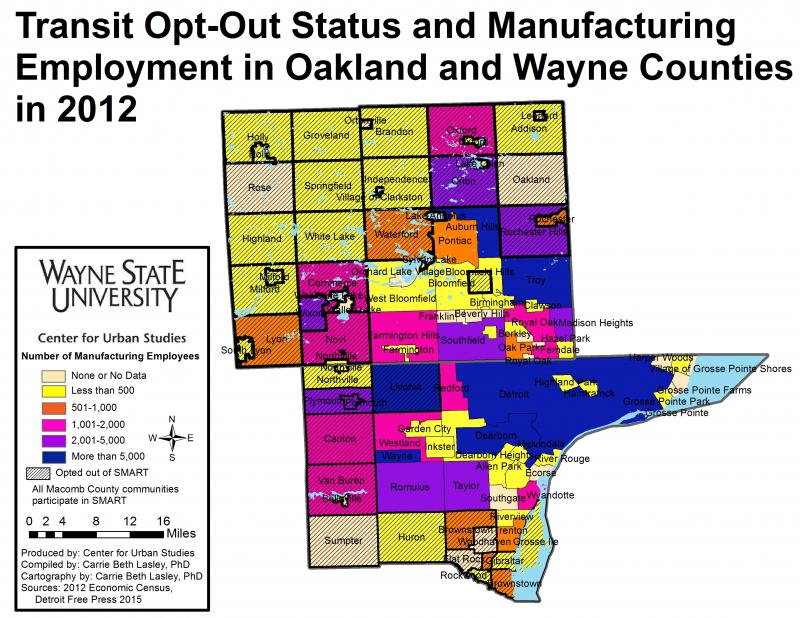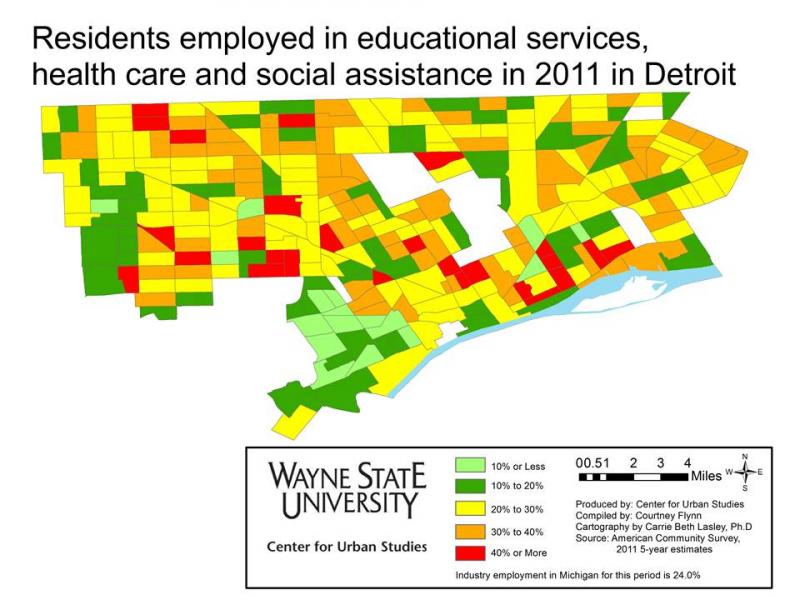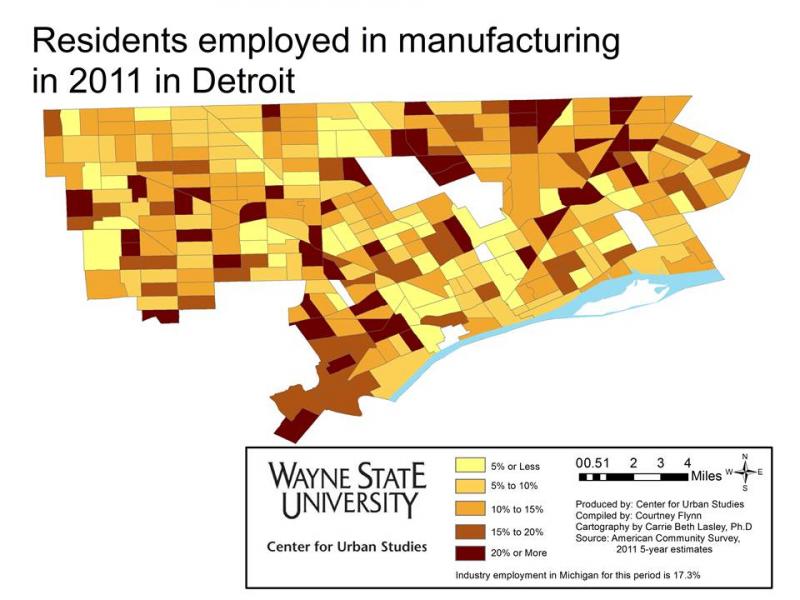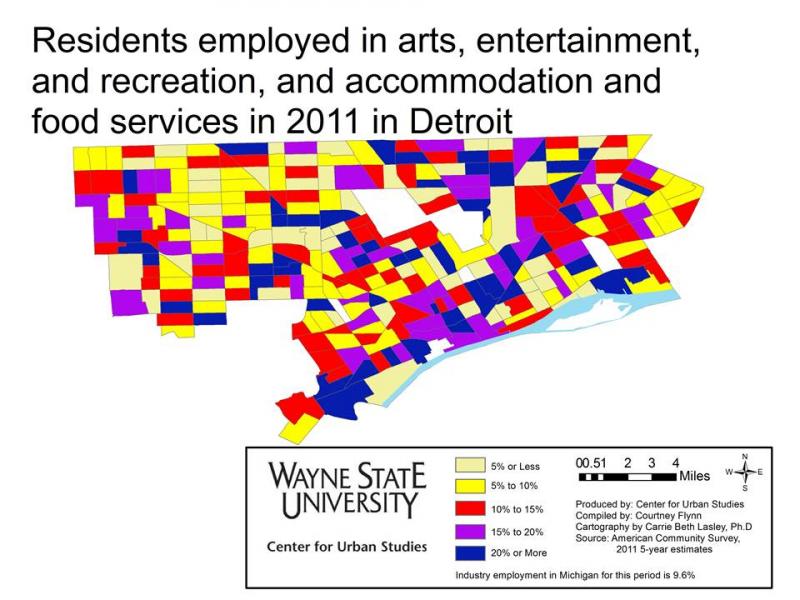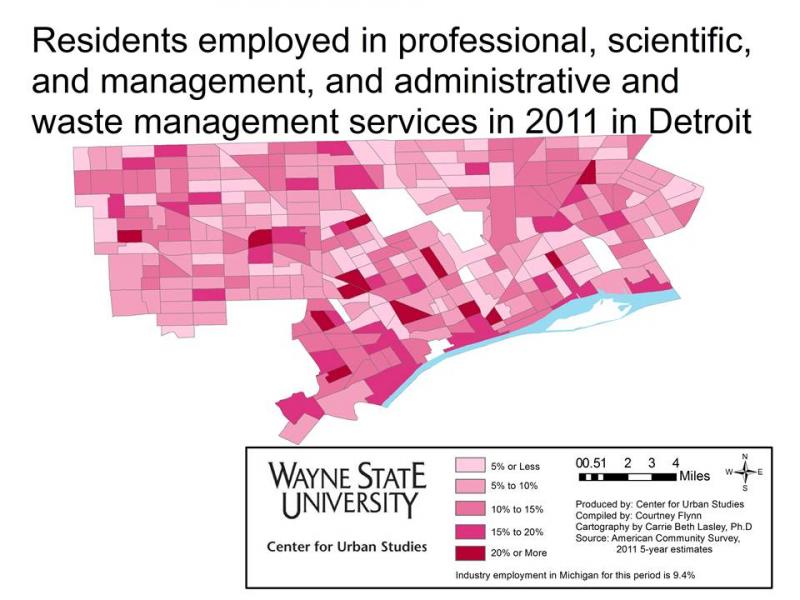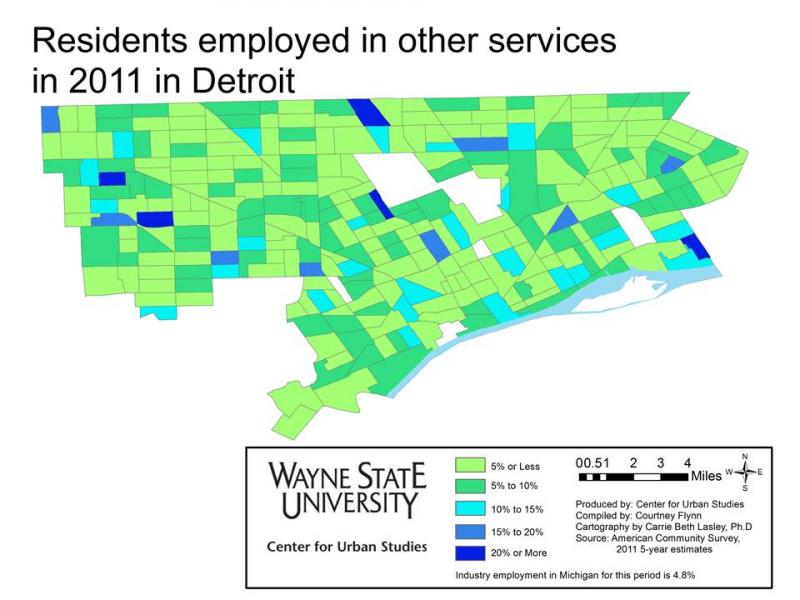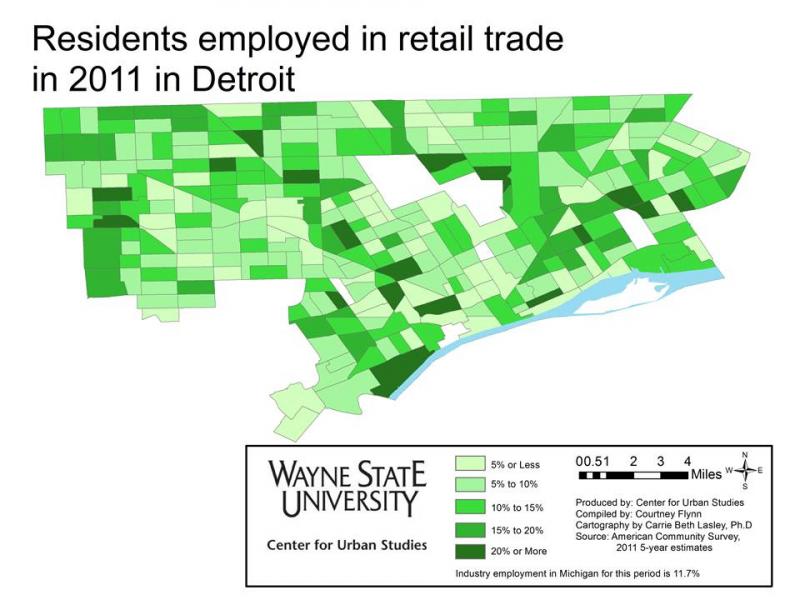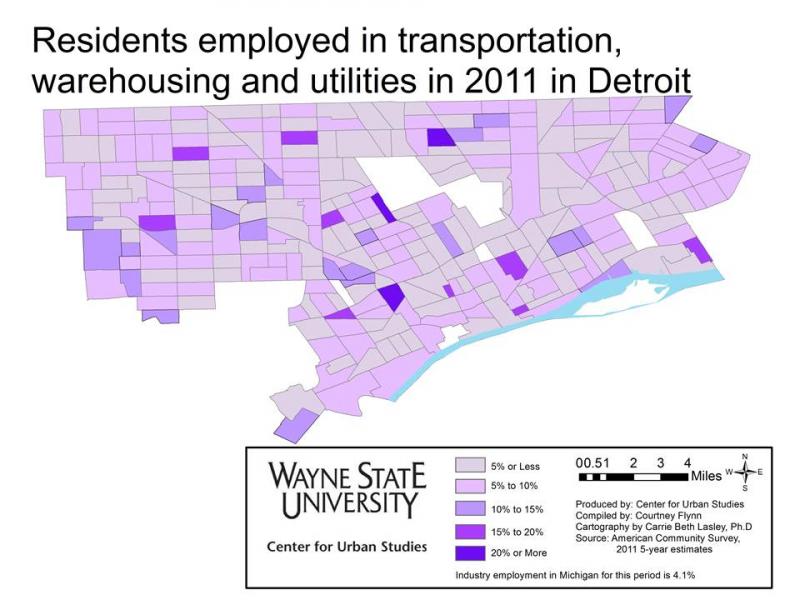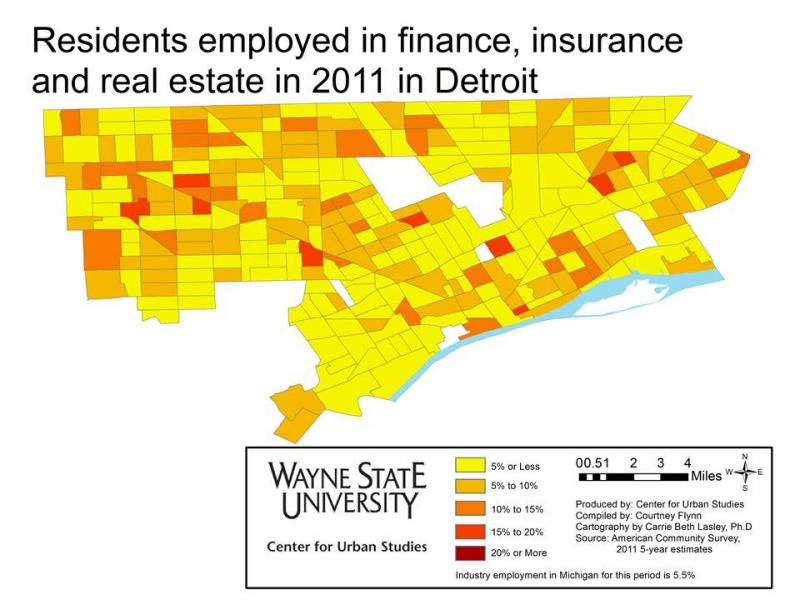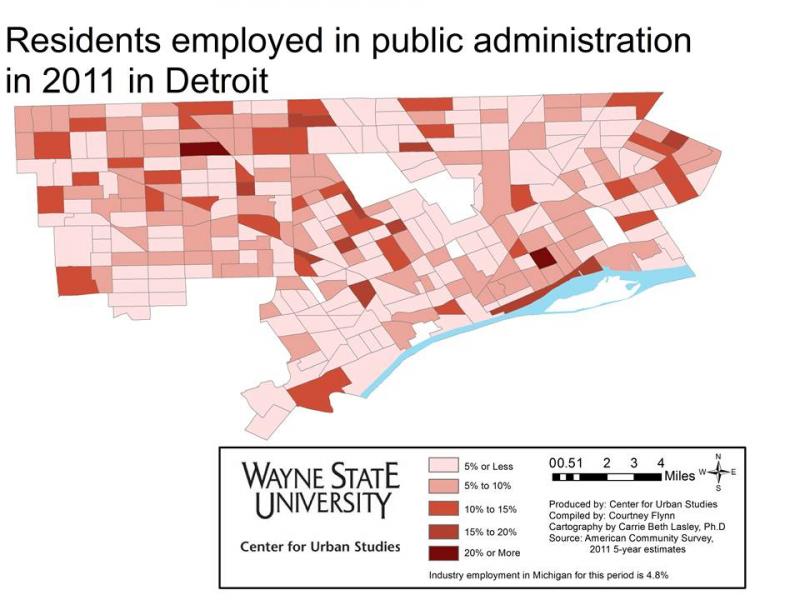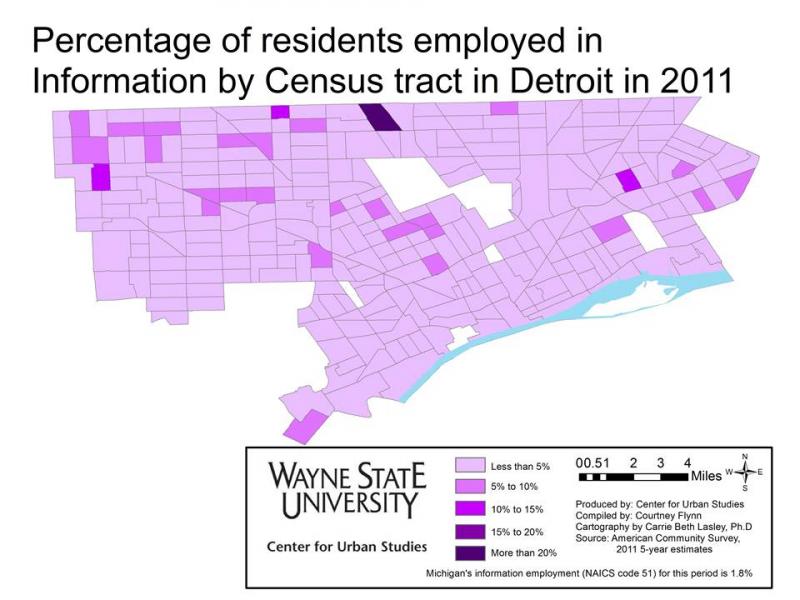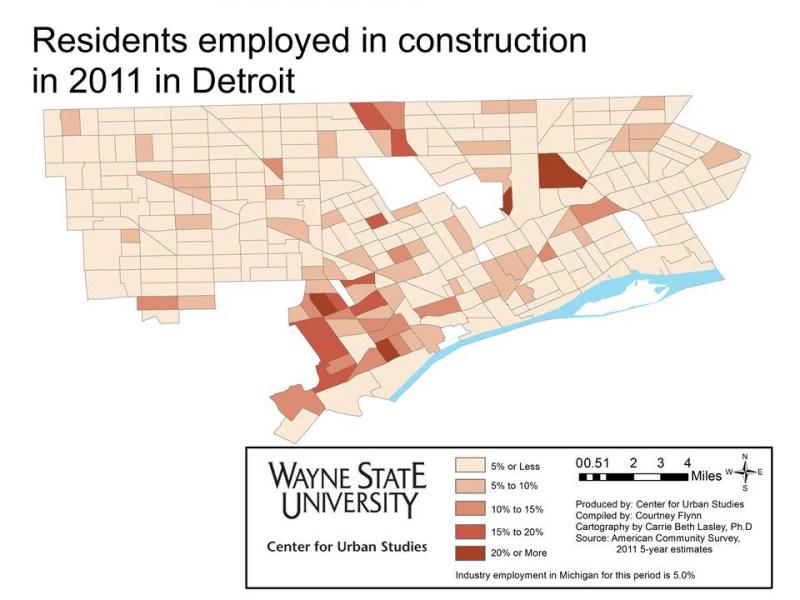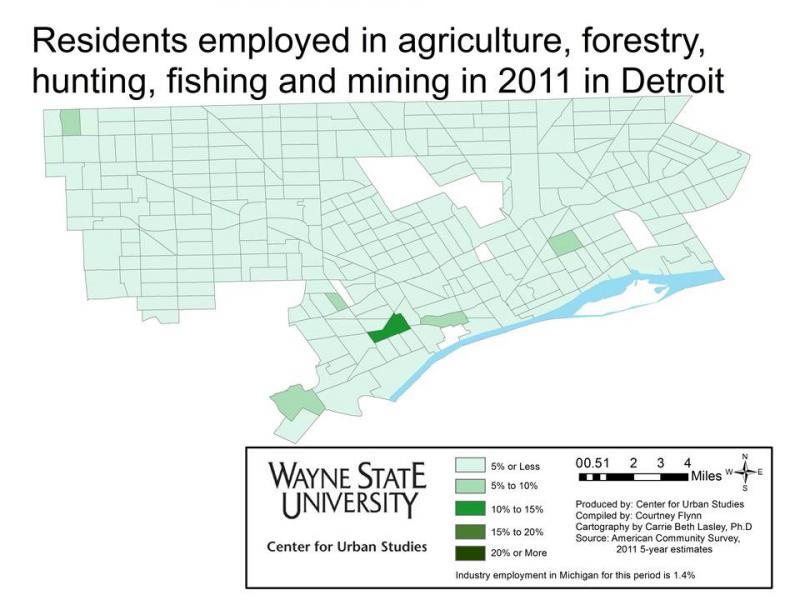The Southeast Michigan region was the fifth largest export market in the United States in 2013 according to U.S. Census Bureau Statistics, with more than $53.9 billion in exports. In the same year, the state of Michigan reported $58.7 billion in exports, making the region (which includes Lapeer County in the Southeast Michigan) responsible for 91.8 percent of the state’s export economy. This post explores the role of exports in the regional economy and examines how trade connects the region to the world economy.
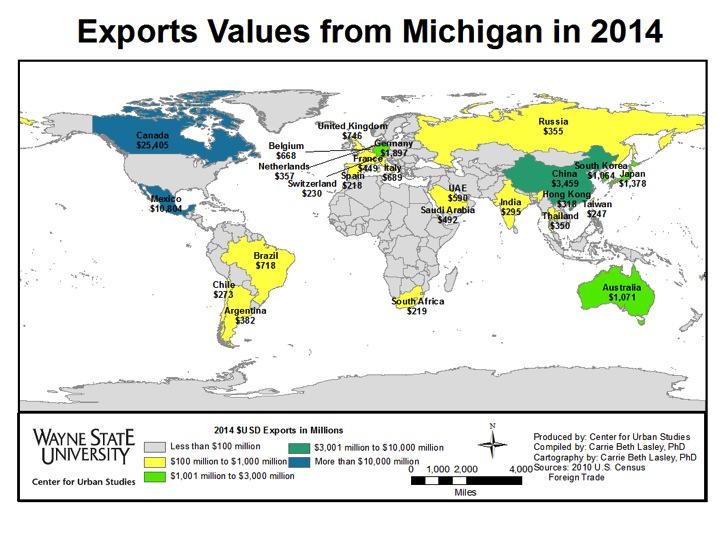
The map above shows the top 25 export recipients receiving goods originating in Michigan in 2014. In 2014, Michigan exports accounted for 3.4 percent of the national export total, by value. Among the top 25 export recipients are countries on six of seven continents. The strongest partnership is with neighboring Canada at more than $25,405 million. Fellow North American Free Trade Agreement (NAFTA) partner Mexico follows Canada, but is well behind at $10,804 million.
Export statistics support Michigan’s case as a leader in automotive manufacturing, and this is driven by Detroit. Of the top 25 products being exported, 21 were automotive parts or vehicles; they comprised 45.4 percent of all exports from the state of Michigan in 2014, and grew by 2.9 percent, on average, between 2013 and 2014. Exported products that were not directly related to the automotive industry were aircraft parts, natural gas, iron ore and medicines. These products represented just 6.6 percent of all exports, by value, and saw an average growth of just 2.7 percent from 2013 to 2014.
In 2013 Wayne County produced the lion’s share of exports by value in the region ($31 billion), more than double the second-highest exporting county (Oakland at $14.5 billion), according to the International Trade Administration (ITA), a division of the U.S. Department of Commerce, using Census data from 2013.
The ITA also indicates that exports were not predominantly the Big 3 automakers exporting finished products, but small producers of automotive parts. In 2011, 7,215 different businesses exported out of metropolitan region, with 90 percent of exports coming from firms employing fewer than 500 employees, according to the ITA.
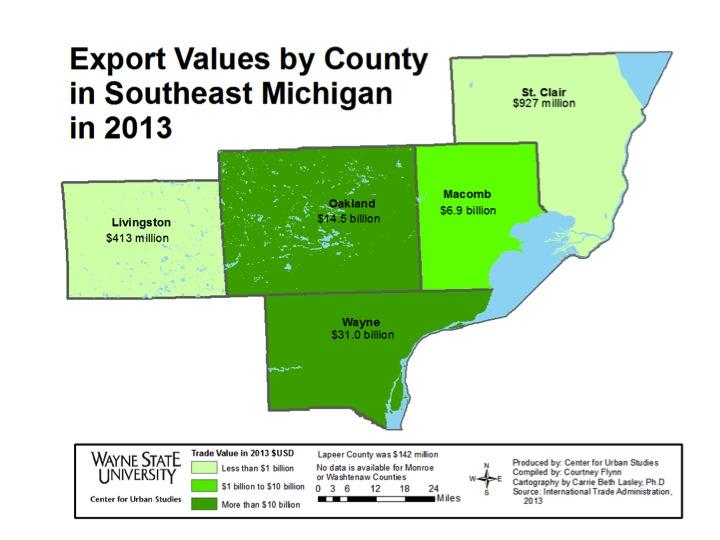
The next two maps look specifically at the Ports of Detroit (this includes two ports, Detroit Metropolitan Airport and the Port of Detroit – a container port). These maps show export partners by value and by weight for 2010, the last year for which the Census Bureau has port-specific data publicly available. When examined by value, Detroit sent a great deal of export value in 2014 ($USD) to Canada and Western Europe. No country outside these two regions received more than $25 million in exports from Detroit. Nations with robust automotive industries of their own – Germany, the United Kingdom and France – are among some of the largest recipients of Detroit products.
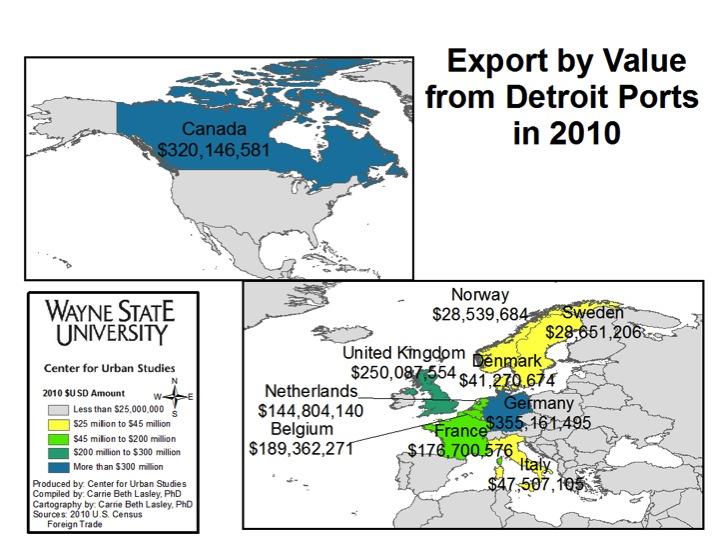
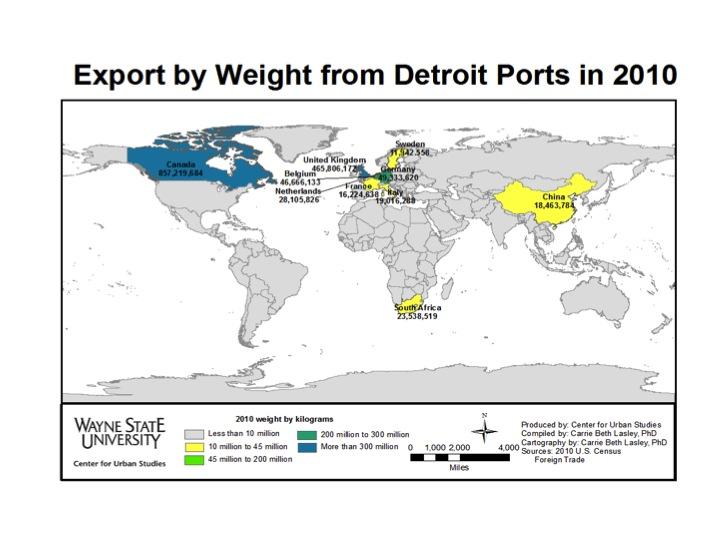
When examined by weight, a more broad trade geography emerges. Including this measure allows us to see more clearly where finished vehicles and iron ores are going. While Canada, Germany and the United Kingdom still lead among export recipients when considered by weight, South Africa and China emerge as significant trade partners.
The ITA indicates that since 2010 Michigan has seen a noteworthy increase in trade (by value) with Mexico, Saudi Arabia, China and the United Arab Emirates, which have overtaken many of the European nations to join Canada among the top five recipients of Detroit-area exports.
